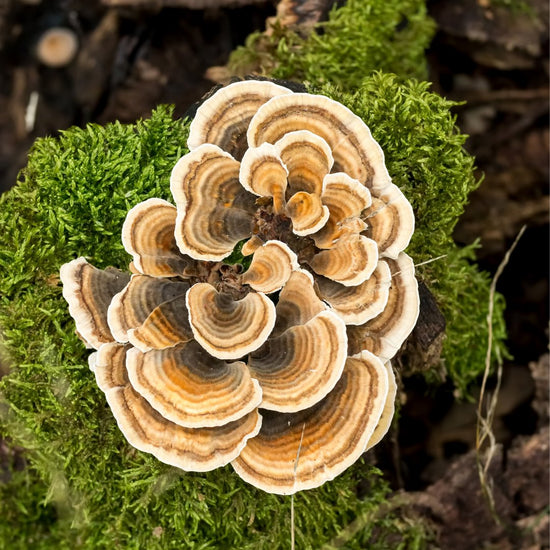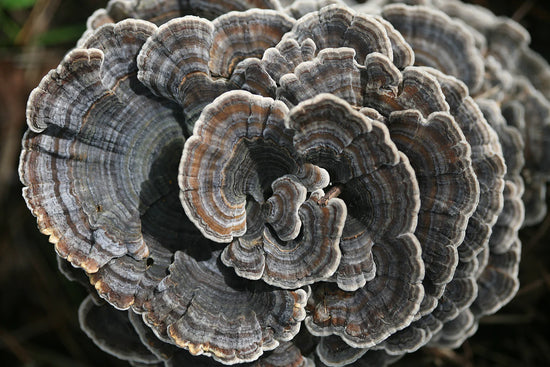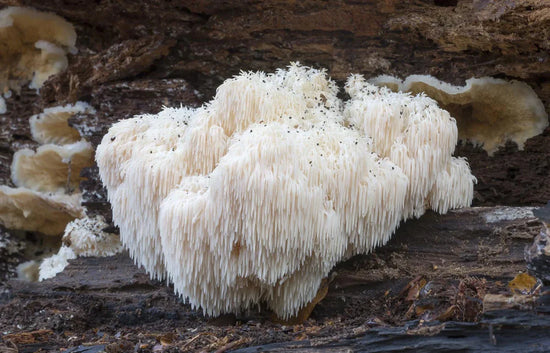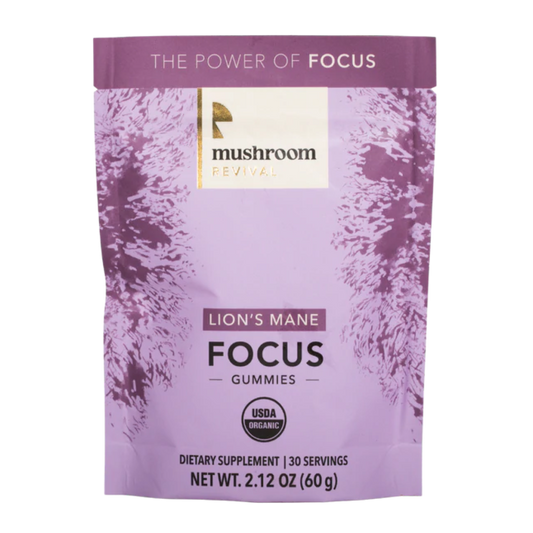TRANSCRIPT
Unknown Speaker 0:11 Welcome Welcome you are listening to the mushroom revival podcast. This is your host Alex Dore and we are absolutely obsessed with bridging the gap between you are wonderful, lovely listeners and the incredible beautiful intricate world of fungi and mushrooms. We bring on guests from all around the world to geek out with us and go down a rabbit hole to strengthen our partnership and bond with fungi. So today we have two interesting guests dunya and Felix that are going to talk about spores and prehistoric animal dung to learn more about biodiversity and collapse of species. So, Danny and Felix, how're you doing today? I'm doing great. Thanks. Yep, very well. Thank you. Unknown Speaker 1:03 Why don't you introduce yourselves for people that don't know who you are? Sure. I'll start. So my name is Daniel rego. I am a Colombian scientist and educator. I was trained in Colombia in the US and in France. And I established my career at the University of Exeter in the United Kingdom. When I work currently, I specialize on biodiversity and climate change. And I work mostly in Amazonia and in the tropical this. And I'm Felix, I'm from England, originally from Bristol. I recently did my Masters by Research at the University of Exeter, and my geography degree here to Unknown Speaker 1:51 I guess, I call it to mention how fungal spores became involved in my path. So I was thinking about that and go back to when I was young and my love or interest of megafauna. I have quite fond memories of Unknown Speaker 2:09 watching a program called Print star park with my brother. And in the in the series, the main character would go travel back in time and Unknown Speaker 2:22 bring megafauna species back to a Unknown Speaker 2:26 contemporary or present like conservation site. So like to save woolly mammoths, etc, from the potential extinction. Unknown Speaker 2:35 So that that and my love of geography and nature went on to study at a geography degree in Exeter, where I met dunya Unknown Speaker 2:46 presented the idea of looking at fungus spores, with megafauna extinctions for dissertation. And yeah, that's why I'm puffs. Unknown Speaker 2:59 And I read an interesting article that that you guys were working on about how fungal spores were found in in prehistoric dung that revealed that large animals went extinct in two waves in the Colombian Andes 23,000 years ago, and then again, 11,000 years ago, so can you can you kind of give a brief overview of this research and how it came about? Unknown Speaker 3:28 Sure. So this is a piece of research that we've recently published in the Journal of Veterinary Research is open access. So anybody can go and download it if they want to read more after they listen to this podcast. And the paper focuses on megafauna extinctions or the extinction of large herbivores at the end of the Pleistocene. So that is, Unknown Speaker 3:54 before 10,000 years ago, and potentially deeper time. And we are looking at these extensions in the eastern Cordillera of Colombia. And we are focusing on the timing of extension. So when these large herbivores disappear from the landscape, and also on the ecological consequences of those extensions, so what happens to the ecosystem after we have the collapse of large populations of large herbivores? Unknown Speaker 4:34 So as someone who has no idea about gaining information from prehistoric items, what information can researchers gain from finding prehistoric spores and dung? Unknown Speaker 4:49 Okay, so we can detect the presence of large herbivores when we find fossilized pores in the sediments. So Unknown Speaker 5:00 So actually, we use columns of sediments or soil. And often they are organic rich, so they're very dark and higher have high context of organic matter. And part of that organic matter is Unknown Speaker 5:17 microfossils. And the spores of these fungi, they preserve really well in certain environments. And that's what we use to reconstruct the presence of large herbivores in the landscape. And what we can see is, we can quantify the abundance of several types of CO profitless stores. Unknown Speaker 5:44 And when we see decreases in the abundance of the spores, or when we see complete collapse of all of these abundances in the record, or when they reached zero, then we can infer changes in the abundance of large herbivores, and potentially the extinction of large herbivores during the past. Unknown Speaker 6:10 And is the assumption that these animals were eating the mushrooms or that the the spores were getting in the dung some other way? And if there's more spores, there's more mushrooms, aka more biodiversity in in fungi and fauna. Unknown Speaker 6:29 So to answer that question, Unknown Speaker 6:33 I want to talk a little bit about the lifecycle of the spores. So copper fillers fungus, spores are asked and asked and asked Mike firing on funghi which means the spores shooters, Unknown Speaker 6:46 which produce spores and they're asking Unknown Speaker 6:50 now, so they are supposed to cover is foundry or calm, you could also say they're done loving funghi. Unknown Speaker 6:59 And although it'd be pretty cool, if they were consuming the mushrooms, it's more likely that they're consuming the vegetation because once the spores are released, they are photo trophic which means this falls naturally attracted to the light. And as, as we know, plants, vegetation needs sunlight to grow. So as the herbivores consume that they shouldn't take vegetation they consume the spores Unknown Speaker 7:28 which then pass through the the test digestive tract and germinate in feces. Unknown Speaker 7:36 The feces preside provides the nutrients and minerals needed for the spores to to grow. Unknown Speaker 7:44 To complete their lifecycle. Sorry. And Unknown Speaker 7:48 yeah, so not all got perfidious fungus spores will produce mushrooms. Unknown Speaker 7:55 And it's more likely that it would be the vegetation they're consuming, rather than the mushrooms itself. Got it? Got it. Yeah, that makes a lot more sense. Unknown Speaker 8:06 Definitely. And are you able to identify to genus or species of of from these spores? Or is there is a certain age or to them that kind of degrades the DNA and you're not able to kind of verify what exactly you're looking at. Unknown Speaker 8:29 So yes, so the micros, the microscopic morphology of the spores, allows us to identify them to genus level. Unknown Speaker 8:39 The most abundant spores we found in our record from Colombia are from the spores of the genera permelia are the limitations circa for college lecture, the lecture products for Solidaria and Czajka denature. Unknown Speaker 9:00 Which is eight sport, a propolis, fungus spores. And in order to identify these, we use books of guides and a lot of time. Unknown Speaker 9:12 In the end, did you see any species that are not currently in Colombia right now that maybe has potentially gone extinct or moved locations? So you don't see it as as often anymore? In the Colombian Andes? Unknown Speaker 9:30 Yeah, so we are actually not able to say if we find spores that have actually gone extinct. One of the assumptions of our research is that these spores are Unknown Speaker 9:45 kind of fitting the same ecology and the same Unknown Speaker 9:49 requirements, habitat requirements that they Unknown Speaker 9:54 that they have today. And so we use the ecology of this force and what we know about this force Unknown Speaker 10:00 Today, and we apply it to the past. So one of the assumptions is that they haven't changed much over that timescale, which is reasonable when it comes to evolutionary timescales. Unknown Speaker 10:15 Does that make sense? Yeah. And it makes sense your explanation of the the kind of density of, of the spores and the fecal matter of how relating that to kind of biodiversity and how many megafauna there are? Can you? Can you infer kind of the same information from maybe spores stuck in say, Amber, for example. Unknown Speaker 10:47 So, with in terms of all research and what we do here, Unknown Speaker 10:53 we haven't looked at resin. So the definitive answer, I'm not completely sure, either that Unknown Speaker 11:00 has made me think of Jurassic Park and Jurassic Park films. Right, right. Unknown Speaker 11:07 There has been, I guess, similar. Unknown Speaker 11:11 A similar age research Unknown Speaker 11:14 in terms of the spores becoming locked in something. Unknown Speaker 11:18 This was by a researcher who was kind of progress, the identification of fungal spores, and this was Unknown Speaker 11:27 finding spores in the intestinal intestinal feces of mammoth preserve the permafrost. Unknown Speaker 11:35 So on those no quiet is answering your question of rate resin. But Unknown Speaker 11:43 there are alternatives. Yeah, and just the compliment. So if we were to find some of these pores preserved in amber, or embracing Unknown Speaker 11:55 what we can infer from that information is that megaphone our mega herbivores, large herbivores were present in the landscape. Unknown Speaker 12:06 What we are not able to say is how abundant they were, or when they went extinct. Because if the spores are preserved, in situ, I would, I would assume so very close to the source when it comes to preservation medium like arbor. Unknown Speaker 12:27 What they're telling us is that there was a mega herbivore nearby, but they cannot tell us much about the populations the size of the populations. And they cannot tell us when they are not in the landscape. They can tell us they are but not when they're not. Unknown Speaker 12:43 So Unknown Speaker 12:45 how do you know how old it is? So you find this preserved dung and you bring it back to the lab? How do you know that, you know, this extinction event happened 23,000 years ago? Okay, so we use a combination of microphone analysis. So where does where the these profitless tours take center stage. And we do that under the microscope. And these spores are extracted from sediments, not directly from the faeces, but from sediments from lakes or peat bogs, in this case for our research and Columbia. And we combine that with analysis of radiocarbon. So these are isotopes of carbon that allow us to, Unknown Speaker 13:39 to estimate the age of those sediments going back in time. Unknown Speaker 13:45 And so the combination of these two sources of information can tell us on one side, the abundance of mega herbivores, and when that abundance declines or becomes zero, and the radiocarbon can help us establish when that happens, so the age of those changes in the record. Unknown Speaker 14:08 Interesting, and you said peat bogs? Or do you say lakes? Yeah. Unknown Speaker 14:15 So I was researching peat bogs before this interview and how they preserve these things. And it it the basic explanation was Unknown Speaker 14:26 it messes with the pH to basically pickle them. Yeah, secreting humic acid and basically pickling things. How do lakes preserve things? Yeah. So that's a very important, very interesting way to explain how this was a realization happens. And yeah, you're exactly right. It's almost like pico in these stores. Unknown Speaker 14:54 So they get preserved in what allows the picholine let's say is not oxygen and Unknown Speaker 15:00 Vironment and the other factor that contributes to these is that the spores, as well as pollen, grains and particles of charcoal, they all have very resistant materials, very resistant organic molecules in their walls. And so when you have low oxygen conditions that allow the picholine, then these, Unknown Speaker 15:24 these spores get preserved. And so examples of environments with low oxygen or where you have anoxia at the bottom, are pit box, and lakes. So when you have a deep lake, Unknown Speaker 15:42 you often have sterile oxygen at the bottom of the lake. And so when sediments accumulate over time on the bottom of that lake, Unknown Speaker 15:52 they also embed spores and other microfossil species of plants, etc. And the low oxygen conditions allow us to allow them to get preserved for 10s of 1000s of years, there are even records that go hundreds of 1000s of years, when it comes to microfossils. Unknown Speaker 16:14 Wow, interesting. And are you finding like actual fossilized done? Or are you just finding the spores? And the and the charcoal? And like, what, when you when you find something, what does it look like? Yeah, so we don't find we're not working directly with the, with the feces or the down, we are working with the spores that get washed into a lake or deposited on the surface of a peat bog. So these spores, once they germinate on the on the dung, Unknown Speaker 16:53 they can become mobile, they can become airborne, because they're very tiny. They're five microns. So I don't know that's like, a 10th of maybe yeah, attends or, or what are 50 hair strands. So they're really tiny, and they can get airborne, or they can get washed by the by runoff water. And like these, they get transported with sediments, just like soil, and they get deposited at bottom of lakes or at the surface of pick books. And then over time, Unknown Speaker 17:29 those environments accumulate sediments in a chronological order, and we can use that to go back into the past. Unknown Speaker 17:38 That makes sense. Yeah, I was I was picturing, you know, like, you were finding preserved dung, and I was trying to wrap my head around. I feel like that would degrade so fast. Unknown Speaker 17:51 Like, that was really impressive. You know? Like, that makes sense. Yeah, it could, it could fulfill life under the right conditions, I think. But it would be very difficult to find. Unknown Speaker 18:05 Just like macrofossils, like, bones, it will be right to find. And, and yeah, but it will, it will look very cool, I think, in our lab, but what we have is actually mud. But that's right. And I'm trying to picture you know, the whole the whole scene when so how do you pick these sites at random? Like, obviously, peat bogs are pretty Do you just to search any lake in any peat bog and then dig until you find something. So there are some kind of geo morphological features that you can use to sort of try to infer whether an environment is likely to have deposited sediments over 1000s of years. And when we are looking at megafauna extinctions, we need to go back into the Pleistocene. So at least 20,000 years and hopefully, all other than that. So we will be looking at the landscape, we often use Google Earth and back in the day, we used to use Unknown Speaker 19:18 aerial photos. And so we look at the geomorphology and try to establish whether Unknown Speaker 19:25 a site that is waterlogged today. So either a lake or a peat bog has the potential to have been in the hands those conditions for long periods of times. So that's one first kind of approximation we do before we go to the field, but it is only when we get to the field and we do the the drilling of the site that we we can actually understand how much sediment and how much Unknown Speaker 20:00 She's kind of chronological history has been accumulated at that site. And so that's another middle point. And then we come back to the lab, and then we send the samples for radiocarbon dating. And that's when we really know whether we can approach questions about megafauna extinctions. Or we can just work on more recent timescales to 2000 years, 3000 years. So it is, Unknown Speaker 20:30 it is a bit of trial and error. But when we hit Unknown Speaker 20:36 when we find this, a site that is old enough to look at these very interesting questions on extensions, it is it feels like the jackpot because it often takes several, several goes several tries at different sites, until we find really old segments. Unknown Speaker 20:57 And are you is there any, like visual cues? Like I know, I know, for trees, you can, you know, count the rings to see how, how old it is like? Unknown Speaker 21:08 Are there any visual cues when you're digging down of like, oh, yeah, I'm 10,000 years ago, or you just kind of dig down five feet, thinking back to lab, dig down six feet, bring it back to lab dig down seven feet. So what we do when we are in the field is we take as many tubes as we can, often we are drilling in really very far away, or kind of difficult to reach locations. So we're limited by how much we can take. But we can we take as much as possible, we go to the site, and we drill as deep as possible. Unknown Speaker 21:47 And we can in the field have some visual clues. For example, in some depending on the location, Unknown Speaker 22:00 Holocene sediments would normally would appear more organic rich than Pleistocene sediments. And this is because of changes in temperature and productivity of the vegetation during the Ice Age, the vegetation was a lot less productive, because it was colder. So the sediments tend to be a lot more clay based. Whereas when you're going to the Holocene, which is a warmer period, with a lot more productivity and higher organic production, you tend to find very dark and organic rich sediments. That being said, that's not necessarily the case everywhere. And so we are the most direct way, we have to find out whether we have reached Unknown Speaker 22:50 Pleistocene or deep enough old enough sediments is the radiocarbon dating, when we get back to the lab. Unknown Speaker 22:59 And these lakes that you're talking about, are they now dried up? Or do they actively have water in them? Unknown Speaker 23:07 It can be mixed. So for example, the site of this research, there is no longer a lake there. Unknown Speaker 23:16 Which is why it's like the peat bog Unknown Speaker 23:20 formation where whereas there is lakes Unknown Speaker 23:26 that still present, for example, in last, this time last year, during myself we're calling in Columbia Unknown Speaker 23:36 on a lake. And just to carry on from what point did we mentioned that the last question, the drilling is by hand. So it's a lot Unknown Speaker 23:45 harder than that quite than it sounds. Unknown Speaker 23:49 Yeah. And yeah, and with that lake, we have gone twice. And we have not been able to reach the Pleistocene sediments, even though we think there are sediments that can allow us to look at megafauna extinctions. We just haven't been able to take enough tubes and enough equipment that two times that we have been there but going back to Pokemon continue on the site of his research and this is a peat bog nowadays but in the record we were able to reconstruct parts of the Holocene when the site was actually a lake standing water boat body that actually dried out towards the present and today's people Unknown Speaker 24:35 and and the site with the water are you what are you scuba diving like how how are you even getting samples from the is it the bottom? Yeah, so so we do drill on the bottom of the lake, but we do these from from a raft. So we use two inflatable rafts that we can kind of backpack if you need to, but they're quite Unknown Speaker 25:00 Are we there essentially at the end key when people use us DNA to go to their sailing boats, Unknown Speaker 25:06 we inflate them and we attach them together, we send you pictures for your listeners if you're interested. And we joined the two, the two graphs. And between the two graphs, we build a tower, let's say, of aluminum tubes, and we enter that into the water column. So this like the Felix mentioned, that we are trying to get places and record from, Unknown Speaker 25:34 is 25 meters deep Unknown Speaker 25:38 in water, and so we build a 25 meter tower of aluminum tubes that go into the water between the two rafts. And then once we reach kind of, we kind of hover with that tower, that's a tower of tubes, we hover right above the settlement right above the bottom. And then through that tower of tubes, we enter another Unknown Speaker 26:07 device, which is a piston core. Unknown Speaker 26:12 And that Unknown Speaker 26:14 there, then we started adding tubes in one meter increments. And then when we get to the bottom, to the very surface, we release a piston then Allah that allows the sediment to go into an aluminum tube. And then we introduced the tube vertically into the ground. And then we once we reach one meter, we retrieve the coring rig or the piston device, we bring it up to the surface to the raft, we remove the tube that is full of sediments, we carpet, label it, and then we put a new tube empty. And then we start over again, we lowered the rig 25 meters at plus one meter, because we have collected the first 100 100 centimeters of the of the sediment column. So we lower it, we push, the sediment goes in the tube, we raise it again back to the surface, cover it again. And we go until, Unknown Speaker 27:20 until it becomes impossible to drive the rig into the mud from the raft. And last time we were in this lake in Colombia, we were able to extract seven meters Unknown Speaker 27:38 below 27 meters of mud below 25 meters of water. And at that point, our manual capacity to drive the rig into the mind was exhausted. And at that point, we needed something like a hammer, there is a device that you can attach to the rig to actual harm to actually hammer the rake into the ground and we didn't have the hammer. And so we had to stop. And we didn't reach this the Pleistocene sediments we we got results from the radiocarbon lab about two months ago that were telling us that those settlements are seven meters or about 7000 years old, and we need to go to 20,000 maybe 30,000 So if we want to work in that site, we need to go back wow Unknown Speaker 28:34 that seems like a lot of work. And you know, I was about to say well maybe peat bogs are easier but I was also researching before this on how just walking in a peat bog is extremely dangerous because you could just fall through because the you know, there's like pits and it's really soft and Unknown Speaker 28:56 and a lot of people wear snowshoes when they're walking to Unknown Speaker 29:04 did you guys wear or they call them bog shoes, I guess. Did you guys wear those to walk around? So what we wear is essentially rubber boots. But it is true that sometimes you can step in your whole leg above your knee because goes in and then you have to wrestle to get your booty out. We cannot go barefoot because in these tropical Unknown Speaker 29:36 Yeah, this pit box there can be some kind of spiky kind of not very sharp vegetation that can hurt your feet so we can do that. Unknown Speaker 29:50 And I guess another way would be using waiters when they use for for fishing. But sometimes it's just difficult to work with all of Unknown Speaker 30:00 That plus the equipment plus Yeah, everything that you have to do so you are correct that peat bogs are a lot easier to drill than lakes a lot easier to drill by often, and they don't span the timescales that you need for this kind of research and in Mancha, Teva, the site where we did this research that we were talking about, we were just very lucky. It's one of the, I think, in my career is the first big book that I have drilled, that that has such a long record, going back to 40,000 years is the first time I've seen that in a pitbull in the tropics. So that's where the legs start coming in. But it is also challenging, but but fun at the same time. Yeah, I spent a few months in Ecuador in 2015. And we were traveling around researching in different areas. And we wore these rubber boots most of the time. And I remember we were in one area that was extremely muddy. And I can't remember what the tip was when we you know, like we fell through and we got our leg like released really stuck in there. There's a there's some trick to make sure that we didn't lose our boot when we're pulling it up. And it happened to one of our colleagues like her boot with her leg went through like really, really deep. And we had multiple people trying to pull her out for like 20 minutes. And then when she finally like, got her leg out, the boot was just stuck in there. And she had to walk around like the rest of the time with just one boot. Like we tried to dig. It was gone. It was like totally gone. We had to like go into town to get get new boots. And Unknown Speaker 32:00 yeah, it was really funny, but I forget the trick. So like, how do you how do you not lose your boot? But yeah, that's funny. Books. Books are known to swallow boots. We also take our undergraduates here to a peat bog near Exeter. It's called Slapton sands, and we teach them in first year geography, the geography degree. We teach them how to do these drilling in pit box. And so we take them and they're all wearing wellies, or, or rubber boots to the pig book. And every year, we lose at least one way or at least someone's bag with only one one bullet. And the other one though the foods is yeah, a wet sock. Unknown Speaker 32:48 Yeah, I wonder what archaeologists are going to say in 1000 years, they're gonna be like, Wow, a mass mass human extinction event happened where like, they all wore rubber boots. Unknown Speaker 33:03 Right, good. Yeah. So speaking of that, you know, obviously you're digging in times, where, you know, pre, you know, Endian, Columbian Endian civilizations were around, right? Unknown Speaker 33:19 When you're digging, have you ever found any artifacts from Unknown Speaker 33:26 any and civilizations or, you know, human remains or anything like that? No, no, we haven't followed any direct evidence of human activity or human occupation in the course that we take. However, we have worked with archaeologists before and the type of sampling that they they do is slightly different. So we go deep in time with these tubes, they do more of a spatial kind of skylight of the of the area and in this commission, and then they find different tracers, for example, in Amazonia, they were looking for other microphones instead, tell us about cultivation and domestication of of plants by humans. But Unknown Speaker 34:23 no, we haven't found bones or when is Unknown Speaker 34:30 not yet. Not yet. Well, we have is indirect indirect evidence of human activity. So for example, depending on the timescale, we can link fires with human activity or with climate. We also may have evidence of some cultivated species in the pollen record that tells about land use changes, but again, it's more indirect than archaeological evidence. Unknown Speaker 35:00 So charcoal was another thing that you're looking at so as spores, charcoal and and pollen. What information can you get from charcoal and pollen. Unknown Speaker 35:11 So Unknown Speaker 35:13 importantly, charcoal and pollen are integrated in the same samples as where we find the cut for this fungus spores. Unknown Speaker 35:23 But the charcoal itself allows us to reconstruct fire activity and the veg, the pollen, to reconstruct vegetation. Unknown Speaker 35:34 And obviously, the crop for this finally supports the hub for presents. So we were able to integrate those together to look at the effects of presence or absence of megafauna upon fire activity and vegetation. Unknown Speaker 35:56 And do you? Do you have any hypothesis why these animals went extinct in two different waves about 23,000 years ago, and 11,000 years ago? Unknown Speaker 36:12 Yes, so we use the abundance of the sports of profitless fun be in the record to tell us about the presence and the absence of these mega herbivores. And like I said before we use radiocarbon dating to establish when that happens, so the timing, and that's where the 23,000 years ago and the 11,000 years ago, comes in. And what we see in our record is to clear reductions or in or decreases in this poor record the scores from the profitless forget, one that happens, or 23,000 years ago, and one second one in more drastic one happening 11,000 years ago, when the the sport record goes completely, no or it goes to zero. So we don't find that the spores indicating that there were no large mega or large herbivores in that Unknown Speaker 37:18 ecosystem after 11,000 years ago. Unknown Speaker 37:24 And to add to that, Unknown Speaker 37:27 there's been Unknown Speaker 37:30 two or three other studies in South America that haven't done exactly the same approach, they've just relied on on one couple affiliates fungus for however, their records kind of have similarities and differences with us. Unknown Speaker 37:44 The two wave decline we found was also found in Peru. Unknown Speaker 37:50 However, the period of extinction, or around 11,000 years ago was later than Brazil and Ecuador, which could suggest that our site, the site of market Teva, acted as a refuge for mindfulness species to survive longer into the policy. Unknown Speaker 38:16 And Unknown Speaker 38:17 is this Do you think because of human activity. Unknown Speaker 38:22 So Unknown Speaker 38:24 in the literature, there are a few hypothesis for the causes extinction and the end of the late Pleistocene, one being climate, Unknown Speaker 38:33 changes in climate, another over hunting by humans. And a third, more out there, well, hypothesis has even been related to an exit trust to impact much like how the dinosaurs went extinct. Unknown Speaker 38:49 Our and our race. Our research, unfortunately, though, doesn't allow us to discuss or to determine the causes of extinction as we're not having a direct evidence for that. But as I'm doing the I mentioned, we're able to look at Unknown Speaker 39:09 fire and you know, sorry, Unknown Speaker 39:12 to infer human presence. Unknown Speaker 39:16 And we found that the decline matched Unknown Speaker 39:21 other records, presence of hunter gatherers in Colombia, as well as Unknown Speaker 39:27 a climatic cooling period. Therefore, we could speculate the, the result, the cause of extinction could be related to both or synergy. Unknown Speaker 39:39 Interesting. I actually just pulled up an article that Unknown Speaker 39:44 was talking about how Unknown Speaker 39:49 in North America Unknown Speaker 39:51 around it also around 11,000 years ago, a lot of megafauna went extinct Unknown Speaker 39:59 but out Unknown Speaker 40:00 To the 36 animals that so far that they've figured out when extinct only to the Mammoth and the mastodon, which I just Googled Macedon and looks exactly like a mammoth Unknown Speaker 40:12 show clear signs of having been hunted, aka they they've been shown to have cuts on their bones made by stone tools. So yeah. Unknown Speaker 40:24 Yeah, so in North who knows, in North America, most of the evidence actually points to hunting by humans, because in North America, the evidence Unknown Speaker 40:35 is a bit more closely linked to hunting. So Unknown Speaker 40:42 there are a few papers where they have found fossils of megafauna associated with Unknown Speaker 40:51 hunting tools, spears, and spearheads and things like that. And also bones with with the markings from from the stone tools. So for continents like North America, these question about whether human activities were linked to the extensions of large, or large animals and mega fauna, it's a little bit more conclusive. Unknown Speaker 41:21 However, these extensions happen in all the continents across the world. And there are other continents where the evidence is not so clear. So one example is South America, that is in part because there isn't a lot of research yet, in South America. And, and also, because there is kind of lack of direct evidence or or sites where Unknown Speaker 41:52 megaphone out microphones or bones have been found and studied. And, and looked at in so much detail. So when it comes to the causes of extension, what we started to see is that Unknown Speaker 42:10 I like Felix says, it could be a synergy between climate and, and human over hunting, but also there seems to be differences between continents, which suggests that the causes of extinction are different between the great that's Unknown Speaker 42:28 yeah, that's, that's interesting. And I read an article. This was way, like, almost 10 years ago now. So the Unknown Speaker 42:37 it's a little foggy. But the the main kind of point of the article was about 3 million years ago, when Unknown Speaker 42:46 North America and South America collided or combined into one and made kind of a landbridge, there was a crazy mass extinction event where Unknown Speaker 43:00 I think one one continent had larger animals than the other. And then when they crossed over the larger animals just completely wiped out the smaller ones. Because they had, you know, more predator predatory advantage. Unknown Speaker 43:18 And I remember reading that and it was it was pretty wild, the numbers. I remember being shocked at how many species went extinct because of just, you know, those two continents merging. But Unknown Speaker 43:32 But yeah, I guess we'll, we'll soon find out with with more, more bogs and lakes being being excavated, so Unknown Speaker 43:42 and what what, what do we Unknown Speaker 43:47 do we know about kind of the Before and After Effects of Unknown Speaker 43:53 what happened to kind of biodiversity as a whole. After these, these megafauna and copper, Phyllis fungi and other things went extinct. Unknown Speaker 44:07 Germans are not extinct, but yeah. Unknown Speaker 44:11 Specifically in the site we looked at. Unknown Speaker 44:16 Yeah, yeah. Okay. So yes, we were able to find by linking Unknown Speaker 44:22 the three proxies that after the second decline, Unknown Speaker 44:29 that the loss of megafauna influence see typically see dispersed species. Unknown Speaker 44:36 There was a couple of species that trapped Unknown Speaker 44:39 trapped the presence of copper feeders, fungus spores, so as the spores Unknown Speaker 44:44 became absent, they did too, which suggests that Unknown Speaker 44:49 there those species require the megaphone to disperse and to pollinate. Unknown Speaker 44:55 We also found that some palatable and woody species increased Unknown Speaker 45:00 Following decline, Unknown Speaker 45:02 palatable as in when the megaphone or they're they're consuming them remove the microphone because assumption doesn't occur. And microphones in contemporary sites are also shown to influence woody vegetation. And Trump for those would tend to station so again move the neg foreigner and those were the species were allowed to grow. Unknown Speaker 45:25 We also found a closure of the site Unknown Speaker 45:30 site previously been dominated by Unknown Speaker 45:33 four ASIO grass grassland with the site's quite open. And then after the loss of the Nightfall species, Unknown Speaker 45:43 site closed, and we found for instance, species that are now today found typically in between closed forest structures. And Unknown Speaker 45:55 finally, we also found increase in fire activity. Unknown Speaker 46:00 Contemporary megafauna, such as rhinos found suppress the buildup of vegetation. So that vegetation that could be used for fire fuels to start and spread, Unknown Speaker 46:15 which allows a fire activity. And we found that this fire activity after make fun of declines, that market either increased based on the charcoal record, so we could infer that as a result of the loss of length fauna, fire fires were more abundant at the site. Unknown Speaker 46:35 Where do you say rhinos? Oh, so So yeah, sorry. I was just just speaking in general. So yeah, for like contemporary studies looked at look at the Unknown Speaker 46:47 consequences of Unknown Speaker 46:52 consequences of megafauna in habitats today, such as rhinos in Africa. Gotta gotta go, isn't it? Yeah. Yes. Unknown Speaker 47:02 Yeah, I thought you were talking about Colombia. And I was like, I know Pablo Escobar brought some rhinos. Unknown Speaker 47:09 What reason? Unknown Speaker 47:12 Yeah, I was thinking I was like, picturing, you know, prehistoric Colombian Andes with rhinos. Wow. Okay, cool. Got it. Got it. Got it. Okay, but Joey. So most, yes. John Krantz laughs which I think also equally as cool. Unknown Speaker 47:30 Yeah, definitely. I didn't know that sloths were so fast. I mean, I'm taking it to kind of tangent here. But Unknown Speaker 47:38 in Ecuador, we short story, we stayed at this research place that was also a animal conservation place that basically like rescued animals, exotic animals being sold in the cities. And so people would go into the jungle and capture these animals and then try to sell them in the cities and this group. Unknown Speaker 48:02 You know, arrested these people brought back the animals and release them into the wild. And when we were staying there, they just arrested this guy trying to sell a sloth. And so we took it out in the jungle and released it and the sloth sprinted away and went so fast up the tree. I'm like, but But you see him like in, you know, and videos and stuff. And they literally grow like moss on there. As they're growing. So, so slow, but like this one went so fast, so like sprinted like a squirrel. Unknown Speaker 48:40 So they can move fast. I just feel like they they're like, not bothered. Unknown Speaker 48:47 Imagine if he was six meters high. I know. And yeah. presentation, we will trump alone. I'm kind of bummed that they're there. They're extinct now. Unknown Speaker 49:00 That would have been cool to see. Unknown Speaker 49:03 And so what what information Unknown Speaker 49:07 like how does this information influence our current biodiversity conservation efforts? Currently? Yeah, so our findings are important because they highlight the disproportionate role of large herbivores in maintaining or or preserving or modifying visitation structure and composition. And like Felix was telling us, what we see is that the composition of the vegetation at this site in the Colombian Andes change completely, but also the structure it went from an open environment to a more closed woody environment. And we also see an increase a very dramatic increase in fire activity following the the extinctions. So currently, we know Unknown Speaker 50:00 We are faced with extinctions and threats to many species, including large herbivores and marvels. And so what our research kind of Unknown Speaker 50:14 highlights is that our conservation and management strategies need to consider both the protection of large animals, but also the potential contact consequences of their extension on other spaces and on fire activity. Unknown Speaker 50:31 which highlights the importance of the funding sports going back and our abilities to Unknown Speaker 50:39 analyze and identify these sports. Unknown Speaker 50:42 Right? Unknown Speaker 50:44 to two things, I googled the giant sloth and it's massive Unknown Speaker 50:51 20 feet tall. Unknown Speaker 50:54 Incredible. The second thing is the the, I don't know if you've heard of the book, I think it's called how cows can save the planet or something like that. Basically, this author Unknown Speaker 51:09 that there's this theory, or most people think cows are extremely detrimental to the environment with you know, Unknown Speaker 51:20 you know, cow farts, burning a hole in the ozone layer, but this, this author basically Unknown Speaker 51:28 creates this. Unknown Speaker 51:32 This other way of thinking about it, that cows and other megafauna and smaller font as well really help, as you're describing, you know, clear the small vegetation, in forests. And also when they're, you know, dedicating their they're creating, Unknown Speaker 51:53 you know, nutrients for the plants and building soil. And they're, they're trampling and aerating the soil and and if you have the successions of animals roaming through forest, you're preventing forest fires, like you're talking about. And it's actually really key for our biodiversity conservation efforts that we are working with these animals in a way to where we are, are grazing them through forest rather than, you know, keeping them locked up in these, Unknown Speaker 52:30 you know, fenced in areas, like we need to graze them and work our conservation efforts around. Unknown Speaker 52:39 grazing, so we're not having these terrible wildfires that we're having right now. Unknown Speaker 52:45 Yeah, very true. And I think what personally, I think is, like most things, in science, and in general, and kind of the way humans think that it's a bit of finding a good balance, a good middle point between having cattle and, and farming them and using them. Unknown Speaker 53:12 As megafauna in the landscape, for example, to manage fires, and manage the vegetation composition and structure. Unknown Speaker 53:23 And also, kind of introducing these other elements of the natural vegetation and the natural ecosystems to a point where we can preserve but we can also use and manage our resources, including biodiversity, I think it's, it's very much a middle point is not capital is bad, or capital is great. It's more like, okay, capital could be good, if it is done. Right. Right. Like, like all things, right, you know, Unknown Speaker 53:58 technology, most technology, it's, there's a really big pro and a really big con and it's, it's how it's used. Unknown Speaker 54:08 What's what's been the hardest part of this research? Unknown Speaker 54:12 Okay, maybe with this, we can both kind of Unknown Speaker 54:17 pitch in because what would have been very challenging for me is potentially different to what Felix found that was challenging. But I'll start by saying that. Unknown Speaker 54:29 From my point of view, this was challenging because it was a new research line we were developing here at the University of Exeter, and we found that there isn't a lot of literature available on morphology of spores of profitless fungi. And also there isn't much Unknown Speaker 54:49 in literature or expertise on the laboratory techniques to extract an isolate and concentrate the spores from sediments Unknown Speaker 55:00 So essentially, when we started the data collection for this research, we almost had to start from scratch and slowly build up our knowledge and our expertise on this area. And, and now we feel very proud to have been able to produce something that is Unknown Speaker 55:17 it's quite pioneering is the first study of this kind in the Colombian territory, and in the Colombian Andes. And it also has some elements of innovation that we actually develop us, we found this challenging. And maybe Phyllis can elaborate on that. Unknown Speaker 55:40 By just to echo Yes, the hardest part was definitely the identification at the start. Unknown Speaker 55:48 I listened to one of your previous podcasts, and I think you said something like, find the sports that wants to be more exposed and want to be characterized. Unknown Speaker 55:59 So true, when we started Unknown Speaker 56:03 to try and specifically identify these specific species, was very challenging as the fact that we started drawing them just coming out of COVID. So trying to get resources and arrange meetings and have these things online. Was I was in the labs. And Unknown Speaker 56:25 yeah, that was also very tricky. Unknown Speaker 56:28 So yes, the start and the identification. Yeah. And just to finish up, one of the elements of innovation that came out of these challenges that we face is that we produce a piece of research that has used for the first time complete assemblage of Copperopolis spores from the record. So all of the papers that we see published on megafauna extinctions, using spores from CO profitless funny, use one species one kind of spore from the record. And what we did here in Exeter, is that we looked at all the profitless and semi profitless spores that we found in the record, Felix kind of buried himself in the lap and in the microscope, and going really, Unknown Speaker 57:27 really specialized on identifying more than one sport, which is what others have done. And actually, we now are able to produce this multi species record that is more reliable and is more kind of accurate when it comes to, Unknown Speaker 57:48 to establishing timing and abundance of megafauna in the past. Unknown Speaker 57:54 Congrats, that's awesome, you know, it, we need, we need that to push forward, we need to step out of our comfort zone and, and create these things that aren't there. So future generations and more people around the world can collaborate and Unknown Speaker 58:13 and add to this research. So I think that's awesome. And I do you want to say that Unknown Speaker 58:20 I'm kind of a jack of all trades when it comes to mycology, but taxonomy is my weakest link. Unknown Speaker 58:27 And especially looking at you know, microscopy is so hard for me. And it's never been something that I have dove too deep into. And so I have a lot of respect for people that can do it. Unknown Speaker 58:43 When I was first learning one of my teachers had to mushrooms, and it's been over 10 years. So I can't remember now, but macroscopically they looks to my eye again, I was just beginning. So to my eye, they looked almost identical. And I couldn't tell the difference. And then he was like, okay, yeah, well look under the microscope at the spores. This is pretty much the only way to identify the difference between these two species. And I did and to my eye again, they look this the same. And he was like, no, no, the one. The first slide. The the spore is just like a tiny bit more oval, and this one is more circular. And I was like, they look Unknown Speaker 59:31 exactly the same. And he was like, well, one of them is poisonous, and one you can eat and I was like nah, is not for me. But yeah, a big difference, a very big difference relying on a small morphological difference in the in the spores. But yes, that's exactly what we're talking about is those kinds of very subtle morphological differences that you can see under the microscope that allows us to Unknown Speaker 1:00:00 By identifying this force to genius level of beasts, and so to species level, so, yeah, like you said, challenges sometimes are blessings in disguise, right? Yeah, what has been the most rewarding aspect of this research? Okay, so I'll start by saying that the media coverage and the interest that we have received for our paper has been great, including the invitation to be in this podcast. So thank you very much the that that's coming on. Unknown Speaker 1:00:33 So that has made us feel like we are producing knowledge that is relevant to the scientific community, but also to the general public. And that our research has implications that people see are our current and are important for current societal issues like biodiversity and climate crisis. Unknown Speaker 1:00:57 And feelings for you. And Unknown Speaker 1:01:02 mine would be the opportunity to visit Columbia and experience it's amazing diversity, Unknown Speaker 1:01:09 to work with Dunia in the field. Unknown Speaker 1:01:14 To call lakes to learn the whole process. Unknown Speaker 1:01:19 And try to work I met an opportunity to meet some amazing people. Unknown Speaker 1:01:26 So yes, I'm very grateful. And that's been this really Unknown Speaker 1:01:31 incredible. Yeah, I cannot wait to go back to Colombia. It's It's such a beautiful country. And yeah, the music, the food, the the biodiversity, everything. I mean, it's it's incredible. Right? That's so cool. And then. So apart from visiting that link again, and and going down to 20 to 30,000 years ago. What? What other research do you guys want to do individually? And then also in the field as a whole? What research do you want to see done? Unknown Speaker 1:02:03 Yeah, so you got it. Definitely, that link is in our short term ambition to go and keep digging deeper and deeper. Now, just in general, in the field, I feel like more research is needed on the timing and the ecological consequences of megafauna extinctions in other ecosystems. So, again, we have concentrated and been able to work in one system, Unknown Speaker 1:02:32 a Paramore ecosystem in the eastern Cordillera of the Andes, but as as you know, Colombia, and South America is a very diverse Unknown Speaker 1:02:45 environment with many different kinds of vegetations and ecosystems. And so it would be interesting to to apply this similar approach to other systems and understand whether Unknown Speaker 1:03:02 these waves of extension are also recorded in other parts of the Andes and other parts of Colombia. But also what are the ecological consequences and whether whether Unknown Speaker 1:03:14 the site in mungkin Theva is actually an exception, or if this is more kind of a trend in most of these systems? So there'll be, I think, very interesting to look at. And then in general, I think more research is also needed on the causes of extinctions, the causes of the megafauna extinctions and, again, how these causes of extinction differ between continents, as I was mentioning earlier, the difference between South America in what you said Alex, in North America, and evidence from Australia and why didn't know happen to that extent in Africa. It will be I think, is an interesting, open question, but that should definitely be researched more. Unknown Speaker 1:04:04 And I don't know Felix has something to add, though. Yes. As so as well as those very crucial points to expand the field and research within copper for this fungus spores themselves. Unknown Speaker 1:04:20 For it, for instance, if there's more Unknown Speaker 1:04:25 fungus spores that could be directly related to megafauna. Unknown Speaker 1:04:29 Within our record, we found four other species that correlated Unknown Speaker 1:04:36 with the aid we previously mentioned, however, because these are newly these were newly identified by other researchers, and hadn't had studies that related them with megafauna we can infer some if these would have supported our study further. Unknown Speaker 1:04:55 Additionally, Unknown Speaker 1:04:57 that the use of fungus spores Unknown Speaker 1:05:00 To talk more about and use more Unknown Speaker 1:05:04 to help teach next generation of Unknown Speaker 1:05:10 conscious paleontologists who would use fungal spores, to Unknown Speaker 1:05:15 answer the crucial questions that I mentioned. Unknown Speaker 1:05:21 Awesome. Well, I hope your future research goes super smooth. And this, hopefully, Unknown Speaker 1:05:30 at least one person listening, gets super fascinated about this and changes their line of work to study this. And I hope more people Unknown Speaker 1:05:40 explore the world around us and figure out what the hell is going on? Unknown Speaker 1:05:44 A little bit a little bit further than we do now. Unknown Speaker 1:05:48 And so where can people follow your work and follow along on all the fun stuff you guys are doing? Unknown Speaker 1:05:56 Yeah, so so we have a website on the University of Exeter website, where we kind of put our our most recent papers. And we also are on Twitter and Instagram. So my account is past teller at past Teller and Felix, your account, I think mine's bit more boring. It's just Felix pin. Unknown Speaker 1:06:22 Maybe I should work on that. Yeah. And then, if they come to the website of the university, they can find contact information that can email us anytime. I hope you're right addicts that at least one person recently, is getting excited about working with spores and trying to identify under the microscope the difference between an oval and almost not Unknown Speaker 1:06:47 Spore. But they also think about how those difference have really important implications for how we understand natural history and extension events as important as the extension of mega fauna at the end of the Pleistocene. So please get in touch. And thanks so much for listening and for the invitation. Alex, we are very excited to talk about our research and very excited Unknown Speaker 1:07:19 to to get to talk to you about about how we do it. Unknown Speaker 1:07:24 Thanks so much, you guys. Unknown Speaker 1:07:27 Yeah, and thank you everyone for for tuning in and tuning in to another episode. Wherever you are. In the world. I hope you learn something new in this episode. And if you did, please share it with people. I mean, this is where what it's all about, you know, it's learning new things and then sharing it with other people. So as a mass consciousness, we can evolve and spread the mycelial network and all grow smarter and wiser and figure out more what's going on in this weird, wacky world that we're living in. And, yeah, it we don't have a Patreon set up or any way that you can donate to the show specifically, but if you want to support the show, you can leave a review that helps a lot and just telling friends and family about Unknown Speaker 1:08:19 about the show. But also we have a website mushroom revival.com, where we sell functional mushroom extracts from tinctures, to capsules, powders gummies. The gummies are delicious. And I think my favorite, Unknown Speaker 1:08:33 they're all organic, all lab tested, super high quality. We also have a bunch of blog posts and free ebooks on there where you can learn a bunch of things and all of our podcasts are on there as well with the matcha show notes. And if you don't want to spend any money, we're actually doing a giveaway right now. So the link is in the bio, the description of this podcast and then you can enter and win some free mushroom goodies. So and then also my newest book, The little the little book of mushrooms is is out it just was published by Simon and Schuster. So you can order that on the website as well for a good overview of mushrooms 75 different mushrooms Unknown Speaker 1:09:18 as well. So with that I hope everyone has a beautiful rest of their day or night. And as always much love and may the spores be with you Transcribed by https://otter.ai
 Prehistoric animals pooped out mushroom spores as far back as 23,000 years ago and we are now today finding them and learning about what life was like back then. Peat bogs, the bottom of lakes, frozen areas, and amber are all hotspots to find these spores which can even tell us about biodiversity, and when and why mass extinction events happened. We are joined by Dunia Urrego and Felix Pym to dive deep into their research in Colombia.
Prehistoric animals pooped out mushroom spores as far back as 23,000 years ago and we are now today finding them and learning about what life was like back then. Peat bogs, the bottom of lakes, frozen areas, and amber are all hotspots to find these spores which can even tell us about biodiversity, and when and why mass extinction events happened. We are joined by Dunia Urrego and Felix Pym to dive deep into their research in Colombia.





























